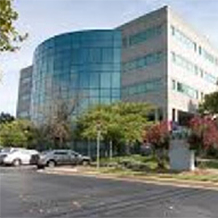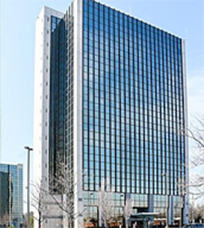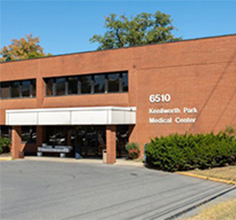.jpg)
Electrocardiograms help detect and monitor a range of cardiac conditions. However, ECGs aren’t infallible. ECG artifacts are false signals that can distort results and lead to misdiagnoses if not properly understood. Southern Maryland Medical Group is here to empower patients with clear information. Read more to find out why accurate ECG testing and ECG treatment are so important.
Artifacts are disturbances or distortions that appear on an ECG tracing but don’t originate from the heart’s electrical activity. They can arise from patient movement, equipment issues, or environmental factors. Each type of artifact has unique characteristics that help primary care physicians and technicians identify and manage them. Understanding these variations can ensure diagnostic accuracy and improve patient care.
Loose lead artifacts occur when one or more ECG electrodes fail to establish a solid connection with the patient’s skin. This can result in jagged or erratic lines on the ECG tracing and mimick arrhythmias. Common causes include:
Make sure the leads are securely attached and check electrode quality before initiating ECG testing. Proper skin preparation can reduce these artifacts.
A wandering baseline occurs when the isoelectric line on the ECG tracing moves up and down. While this may appear alarming, it’s usually caused by:
Patients should remain as still as possible and confirm proper lead placement. Adjusting electrode positions on areas with less muscle movement can also help. For patients with chronic conditions that affect movement, additional strategies may be required to avoid baseline drift.
Muscle tremor artifacts appear as small, erratic spikes throughout the ECG tracing. They’re caused by involuntary muscle contractions or shivering from:
Try to stay relaxed during testing. A warm blanket or more comfortable positioning can reduce muscle tremors.
EMI artifacts are caused by external electrical sources, like:
These artifacts usually appear as regular, high-frequency waves superimposed on the ECG tracing. Eliminate unnecessary electronic devices from the testing area and make sure the ECG machine is properly grounded. Routine maintenance of equipment also helps minimize interference.
During cardiopulmonary resuscitation, chest compressions can create artifacts that mimic ventricular rhythms. These artifacts are unavoidable in emergencies but can complicate real-time ECG interpretation. Medical professionals can utilize specialized ECG software that differentiates between compressions and true cardiac activity. Reviewing the ECG tracing between compression cycles can also provide clearer insights. In critical care scenarios, having skilled technicians on hand ensures the data collected is as accurate as possible.
Neuromodulation devices like pacemakers or spinal cord stimulators can introduce artifacts into ECG tracings. These often appear as sharp spikes that may be misinterpreted as abnormal cardiac rhythms. Inform the technician of any implanted devices before ECG testing. Adjusting the machine’s sensitivity settings can help filter out these artifacts. Collaboration between primary care physicians and cardiologists provides more accurate ECG treatment planning. When devices are known to cause interference, alternative diagnostic tools may be recommended.
Echo distortion artifacts occur when ultrasound waves interact with ECG signals during simultaneous diagnostic procedures. These artifacts can distort the tracing and make it difficult to identify subtle abnormalities. Coordinate the timing of ultrasound and ECG procedures. Separating the two or using equipment designed to handle concurrent imaging can reduce interference. Clear communication between departments ensures both tests are conducted effectively.
Arterial pulse tapping artifacts stem from pulsations in nearby arteries and appear as rhythmic spikes on the ECG tracing. These are more likely to occur when electrodes are placed near major arteries. Relocating electrodes to areas less affected by arterial pulsations can resolve the problem. When arterial pulse tapping persists, advanced diagnostic techniques may be required to rule out other contributing factors.
Accurate ECG readings are vital for diagnosing conditions like arrhythmias, myocardial infarctions, and electrolyte imbalances. Misinterpreting an artifact as a cardiac event could lead to unnecessary treatments while overlooking a real issue could delay critical care. This is why Southern Maryland Medical Group emphasizes thorough ECG testing and collaboration between primary care doctors and specialists to be certain that patients receive accurate diagnoses. Reliable data leads to more effective medical decisions and improves outcomes for every patient. Whether you’re undergoing routine ECG testing or managing a complex cardiac condition, we’re here to help. Contact us to schedule your appointment.
Southern Maryland Medical Group has 3 convenient locations to provide professional medical care services in the Southern Maryland area. Call or schedule an appointment with one of our locations to get medical care help.

5801 Allentown Road, Suite 400 Camp Spring, MD 20746
Phone: 301-868- 0150
Billing Inquiries: 301-552-1270
Fax: 301-868-0243

7500 Greenway Center, Dr #1200 Greenbelt, MD 20770
Phone: 301-486-7580
Billing Inquiries: 301-552-1270
Fax: 301-486-7581

6510 Kenilworth Ave, Ste 1400, Riverdale MD 20737
Phone: 301-618-0771
Billing Inquiries: 301-552-1270
Fax: 301-618-0772